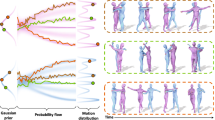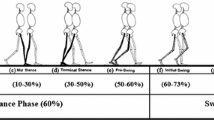Abstract
With the development of science and technology and the improvement of people's quality of life, film and television animation has gradually become an important means to enrich people's daily entertainment and cultural exchanges. The inertial motion capture technology developed on the basis of motion capture has accelerated the development process of film and television animation, making film and television animation effects more colorful and precise in place. This paper presents a method of using inertial sensors to capture human arm motion. Using the quaternion information calculated by the inertial measurement unit, the positions of the joint points of the arm wrist, elbow and shoulder are obtained. The inertial data are transmitted to the host computer through the Bluetooth wireless communication method. The OptiTrack optical motion capture device with millimeter-level motion capture accuracy is used to obtain the position data of the human arm and use it as the reference position data. This paper analyzes the source of the zero-speed detection misdetection combined with experiments, and optimizes the detection algorithm based on the Laida criterion. On this basis, a complete trajectory capture Kalman filtering algorithm framework is constructed. Its embedded attitude depth correction module can effectively suppress the attitude of the angular error diverges. Finally, through physical experiments, the feasibility of the trajectory capture algorithm is verified in terms of accuracy and stability. The test shows that the trajectory capture algorithm described in this article can obtain a higher smoothness of the walking trajectory, so it can reduce the animation complex. The shaking of the human body model during the present process has important engineering significance.











Similar content being viewed by others
Change history
27 December 2022
This article has been retracted. Please see the Retraction Notice for more detail: https://doi.org/10.1007/s00500-022-07787-1
References
Badea CR (2018) Researches on inertial mechatronic motion analysis systems, based on MEMS[J]. Sci Bull Valahia University-Mater Mech 16(15):44–50
Dong G, Li J (2019) The system of motion capture based on inertial sensor[C]//Eleventh International Conference on Digital Image Processing (ICDIP 2019). International Society for Optics and Photonics, 11179: 111793I
Feng Y, Li Y, McCoul D et al (2020) Dynamic measurement of legs motion in sagittal plane based on soft wearable sensors. J Sensors. https://doi.org/10.1155/2020/9231571
Griffith T, Dwyer T, Ablanedo J (2018) Real-time motion capture on a budget[C]//International Conference on Virtual, Augmented and Mixed Reality. Springer, Cham, 56–70
Han Z, Hu L, Guo N et al (2018) A flexible motion tracking system based on inertial sensors[C]//MATEC Web of Conferences. EDP Sci 198:04010
Imtiaz M H, Haque M R, Sazonov E, et al. (2020) LIDAR Based Walking Speed Estimation: A Portable Solution for Motion Capture[C]//2020 8th IEEE RAS/EMBS International Conference for Biomedical Robotics and Biomechatronics (BioRob). IEEE, 934–938
Jin Y, Glover C M, Cho H, et al. (2020) Soft sensing shirt for shoulder kinematics estimation[C]//2020 IEEE International Conference on Robotics and Automation (ICRA). IEEE, 4863–4869
Kim Y, Baek S, Bae BC (2017) Motion capture of the human body using multiple depth sensors[J]. ETRI J 39(2):181–190
Klaassen B, van Beijnum BJF, Held JP et al (2017) Usability evaluations of a wearable inertial sensing system and quality of movement metrics for stroke survivors by care professionals[J]. Front Bioeng Biotechnol 5:20
Li Y, Weng D, Li D, et al. (2019) A Low-Cost Drift-Free Optical-Inertial Hybrid Motion Capture System for High-Precision Human Pose Detection[C]//2019 IEEE International Symposium on Mixed and Augmented Reality Adjunct (ISMAR-Adjunct). IEEE, 75–80
Liu R, Peng L, Tong L, et al. (2018) The design of wearable wireless inertial measurement unit for body motion capture system[C]//2018 IEEE International Conference on Intelligence and Safety for Robotics (ISR). IEEE, 557–562
Luan PG, Tan NT, Thinh NT (2017) Estimation and Recognition of Motion Segmentation and Pose IMU-Based Human Motion Capture[C]//International Conference on Robot Intelligence Technology and Applications. Springer, Cham, 383–391
Marin J, Blanco T, Marin JJ (2017) Octopus: A design methodology for motion capture wearables[J]. Sensors 17(8):1875
Min X, Sun S, Wang H et al (2019) Motion capture research: 3D human pose recovery based on RGB video sequences[J]. Appl Sci 9(17):3613
Raghavendra P, Sachin M, Srinivas PS et al (2017) Design and development of a real-time, low-cost IMU based human motion capture system[M]//computing and network sustainability. Springer, Singapore, pp 155–165
Restrepo-Rodríguez AO, Casas-Mateus DE, Gaona-García PA, Montenegro-Marín CE (2019) Image recognition model over augmented reality based on convolutional neural networks through color-space segmentation. Adv Intell Syst Comput Adv Comput Vision. https://doi.org/10.1007/978-3-030-17795-9_23
Rodríguez AO, Mateus DE, García PA, Marín CE, Crespo RG (2018) Hyperparameter optimization for image recognition over an AR-sandbox based on convolutional neural networks applying a previous phase of segmentation by color-space. Symmetry 10(12):743. https://doi.org/10.3390/sym10120743
Sharif Bidabadi S, Murray I, Lee GYF (2017) The application of inertial measurements unit for the clinical evaluation and assessment of gait events[J]. J Med Eng Technol 41(8):612–622
Sharma S, Verma S, Kumar M, et al. (2019) Use of motion capture in 3D animation: motion capture systems, challenges, and recent trends[C]//2019 International Conference on Machine Learning, Big Data, Cloud and Parallel Computing (COMITCon). IEEE, 289–294
Shi X, Zhao P, Zhao J, et al. (2017) Construction of the virtual maintenance human action library based on motion capture system[C]//International Conference on Man-Machine-Environment System Engineering. Springer, Singapore, 779–788
Voulodimos A, Rallis I, Doulamis N (2020) Physics-based keyframe selection for human motion summarization[J]. Multimed Tools Appl 79(5):3243–3259
Vu D-L, Nguyen T-K, Nguyen TV, Nguyen TN, Massacci F, Phung PH (2020) HIT4Mal: Hybrid image transformation for malware classification. Trans Emerg Tel Tech 31:e3789. https://doi.org/10.1002/ett.3789
Wang TJ (2020) A study on utilizing 3D motion-capture analysis to assist in Chinese opera teaching[J]. Research in Dance Education, 1–29.
Wang Y, Lv H, Zhou H, et al. (2020) A sensor glove based on inertial measurement unit for robot teleoperetion[C]//IECON 2020 The 46th Annual Conference of the IEEE Industrial Electronics Society. IEEE, 3397-3402
Wang H, Tong X, Lu F (2020) Deep learning based target detection algorithm for motion capture applications[C]//Journal of Physics: Conference Series. IOP Publishing, 1682(1): 012032
Wei X, Wan X, Huang S et al (2017) The application of motion capture and 3D skeleton modeling in virtual fighting[C]//international workshop on next generation computer animation techniques. Springer, Cham, pp 99–113
Xia S, Gao L, Lai YK et al (2017) A survey on human performance capture and animation[J]. J Comput Sci Technol 32(3):536–554
Yuan R, Zhang Z, Song P et al (2020) Construction of virtual video scene and its visualization during sports training[J]. IEEE Access 8:124999–125012
Funding
The application of new media art in large-scale fairs (Project Number: SKL-2015-1691).
Author information
Authors and Affiliations
Contributions
ZL designed the framework, utilized the methodology and algorithm, analyzed the results and summarized the significance. Also reviewed and edited the content of manuscript.
Corresponding author
Ethics declarations
Conflict of interest
Not Applicable.
Additional information
Communicated by Vicente Garcia Diaz.
Publisher's Note
Springer Nature remains neutral with regard to jurisdictional claims in published maps and institutional affiliations.
This article has been retracted. Please see the retraction notice for more detail:https://doi.org/10.1007/s00500-022-07787-1
Rights and permissions
Springer Nature or its licensor (e.g. a society or other partner) holds exclusive rights to this article under a publishing agreement with the author(s) or other rightsholder(s); author self-archiving of the accepted manuscript version of this article is solely governed by the terms of such publishing agreement and applicable law.
About this article
Cite this article
Lin, Z. RETRACTED ARTICLE: Research on film animation design based on inertial motion capture algorithm. Soft Comput 25, 12491–12505 (2021). https://doi.org/10.1007/s00500-021-06001-y
Accepted:
Published:
Issue Date:
DOI: https://doi.org/10.1007/s00500-021-06001-y




